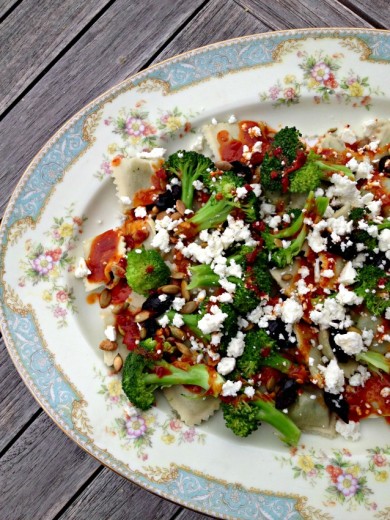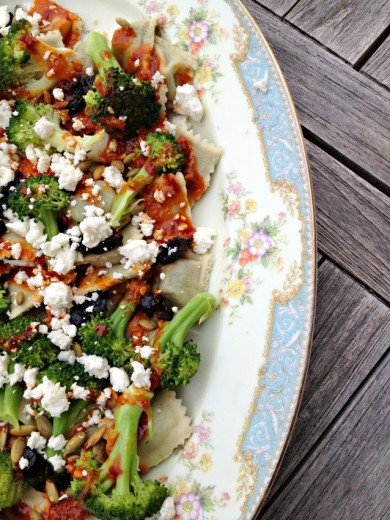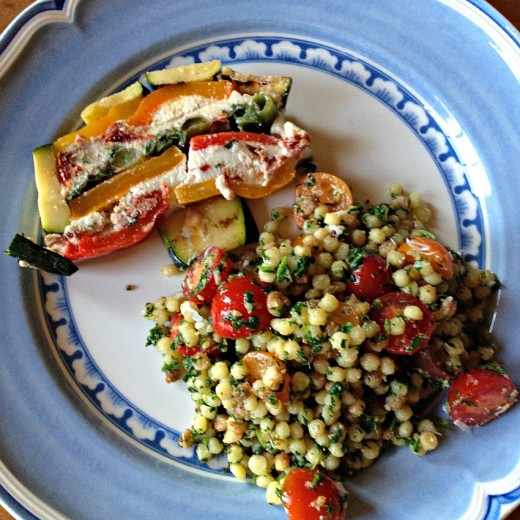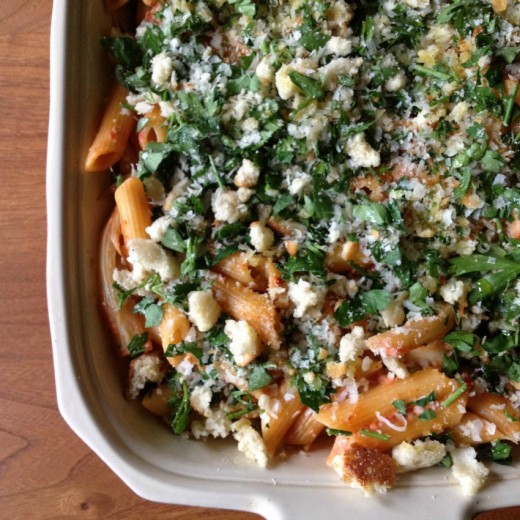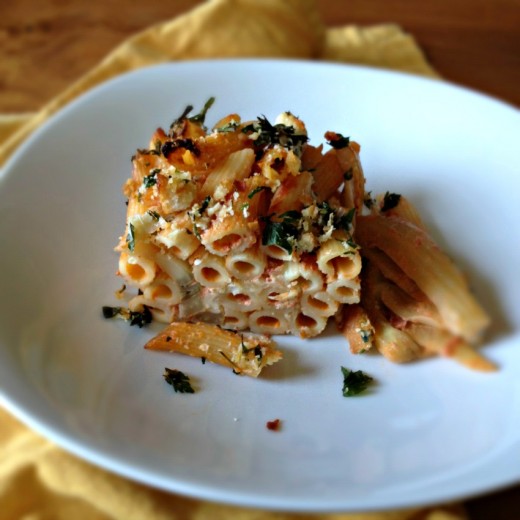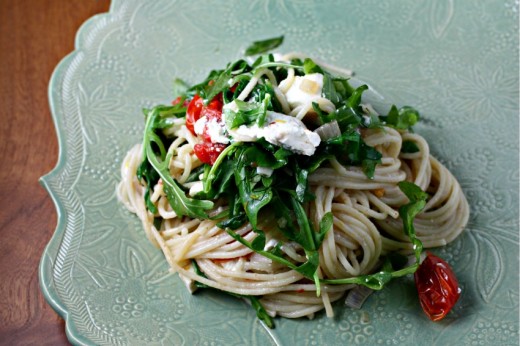Five years ago this month, I went to the first BlogHer Food in San Francisco. It was an amazing experience. I didn’t really learn anything about blogging, but I finally got to meet so many people whose blogs I read then (and still read now) and people I knew only from Twitter. A group of us bonded quickly and many of those people are now friends who I treasure. One of those people is Allison, who used to write the blog Local Lemons and now is the co-owner of Homeroom in Oakland.
Here is a little story. Four years ago, while still living in Seattle, Randy and I stole away to San Francisco for a weekend away from our kids. He had to work one of the days and Allison, one of my favorite blogging friends, met me at the Ferry Building for a day of exploring. She lives in Oakland, a place that, at the time, I knew next to nothing about. I wasn’t even quite sure where it was. Maybe kind of “over there”. Bay Bridge? Golden Gate Bridge? Not sure. We shared an amazing day of wandering. We had terrific pizza and shared a bottle of wine at Delfina and I bought my copy of Plenty, then only available in the British version and costing $65, at Omnivore Books. Along the way, Allison mentioned to me that might be opening a restaurant. She went on to tell me the incredible story of meeting a like minded person while waiting for a table in a coffee shop, and they were thinking of doing a restaurant serving mac and cheese. I listened to and supported her. And in my head I kept thinking, “There are restaurants in Oakland?”
I often think of that day with Allison for many reasons. One is that she did open that restaurant and they have been incredibly successful from day one. Another is that Allison is still a close friend of mine and now that we live close to one another, we love spending time with her, her awesome husband Alejandro and their beautiful baby Nico. And another is how amazing it is to me that I had no perception of Oakland, other than it was “over there”, and now I live here. And yes, there are lots of restaurants in Oakland!
Recently, Allison and her partner Erin came out with a cookbook and I was lucky enough to get a review copy. We have enjoyed eating at the restaurant many times and have been to parties where their stellar mac and cheese was on the menu. I wondered how the restaurant recipes would translate to the home cook. I am here to tell you this is a winner of a book. It totally captures the sweet spirit of the restaurant and all the favorite dishes, mac and cheese and sides alike, are in there. You get a feeling for what it is like to eat at Homeroom and you also get to read about their unlikely partnership. I never really thought that I had passionate feelings about whether mac and cheese should be served creamy from the pot, or topped with crunchy breadcrumbs from the oven, but in fact I do have extremely strong feelings about this important distinction. (The latter. And the book allows you to make most of the macs both ways.) I made two of the mac and cheese recipes and they were, dare I say it?, better than the restaurant. Mac and cheese is special, of course. It is comfort food at its highest level. Some people would say that there is no reason to get fancy. That plain ol’ regular mac and cheese is perfect. I challenge those people to make the Macximus.
This is deliciousness comes from the “International Relations” chapter of the book where you will find other stunners like Croque Madame Mac and Shepherd’s Mac. In this one, we have spinach, artichoke hearts, and three cheeses (feta! Pecorino! Jack!) that go so well together that the end result might stun you a bit. I love mac and cheese as much as the next person but sometimes I find it can get a bit monotonous. All that creaminess in one dish and my palate gets kind of tired. This dish gave my taste buds something else to think about with the added vegetables and the tangyness of the cheese. This is not to say that the Basic Baked Mac and Cheese, which I made for, ahem, the kids, was not amazing. I may have dipped my fork into that dish a time or two. Or three.
(The anything-but-basic version.)
Two Years Ago: Yogurt and Oregano Pesto Soup, Chocolate Dipped Ice Cream Sandwiches, Corn with Tons of Herbs, Heirloom Tomato Tart
Three Years Ago: Savory Scones, Stuffed Summer Squash with Goat Cheese and Mint, Tomato, Semolina, and Cilantro Soup, Double Layer Chocolate Cake
Four Years Ago: Mint Filled Brownie Cupcakes, Corn and Zucchini Timbale, Nectarine and Mascarpone Tart, Chickpeas and Chard with Cilantro and Cumin, Nutella Pound Cake,
Five Years Ago: Summer Rolls (I make these all the time), Chocolate Peanut Toffee (ditto), Pomodori Al Forno (double ditto), Pissaladière
Macximus
Adapted from The Mac and Cheese Cookbook
Serves 6-8
I made a couple of small changes. I added twice the amount of spinach in the original recipe, more shallots, and more artichoke hearts. I also quartered those hearts. The recipe says this serves 4 but we got almost 8 servings out of it. It is rich!
½ pound dried elbow pasta
1 cup crumbled feta cheese
½ cup grated Jack cheese
½ cup grated Pecorino cheese
2 small shallots, minced
1 cup thawed frozen chopped spinach, thoroughly drained
¾ cup canned artichoke hearts, drained and quartered
2 cups Mac Sauce (recipe follows)
½ cup panko (Japanese bread crumbs)
1. Cook the pasta in salted boiling water until a little less than al dente. Drain, rinse with cold water, and drain the pasta again.
2. Preheat the oven to 400ºF. Add the feta, Jack, Pecorino, shallots, spinach, artichokes, and sauce to a large, heavy-bottomed pan over medium heat. Stir until the cheeses begin to melt, about 4 minutes (the feta will not melt, so you are just looking for the Pecorino and Jack to melt and the mixture to get hot).
3. Slowly add the cooked pasta and stir until hot. Pour into a 12-inch baking dish and top with the panko. Bake until bubbly, 10 to 15 minutes.
4. Spoon into bowls and serve hot.
Mac Sauce
Makes 3 cups
Note that this recipe makes 3 cups of sauce but you only need 2 for the Macximus recipe. Allison and Erin suggest using the leftover cup to make biscuits and gravy or chicken à la king.
3 cups whole milk
½ cup unsalted butter
½ cup all-purpose flour
1 tsp. table salt
1. Heat the milk in a pot over medium heat until it just starts to bubble, but is not boiling, 3 to 4 minutes. Remove from the heat.
2. Heat the butter over medium heat in a separate, heavy-bottomed pot. When the butter has just melted, add the flour and whisk constantly until the mixture turns light brown, about 3 minutes. Remove from the heat.
3. Slowly pour the warm milk, about 1 cup at a time, into the butter-flour mixture, whisking constantly. It will get very thick when you first add the milk, and thinner as you slowly pour in the entire three cups. This is normal.
4. Once all the milk has been added, set the pot back over medium-high heat, and continue to whisk constantly. In the next 2 to 3 minutes the sauce should come together and become silky and thick. Dip a metal spoon int the sauce – if the sauce coats the spoon and doesn’t slide off like milk, you’ll know the sauce is ready. You should be able to run your finger along the spoon and have the impression remain. Add the salt.
5. The Mac Sauce is ready to use immediately and does not need to cool. Store in the fridge for a day or two if you want to make it ahead of time – it will get a lot thicker when you put it in the fridge, so it may need a little milk to thin it out a bit when it comes time to melt in the cheese. Try melting the cheese into the sauce first, and if it is too thick then add milk as needed.



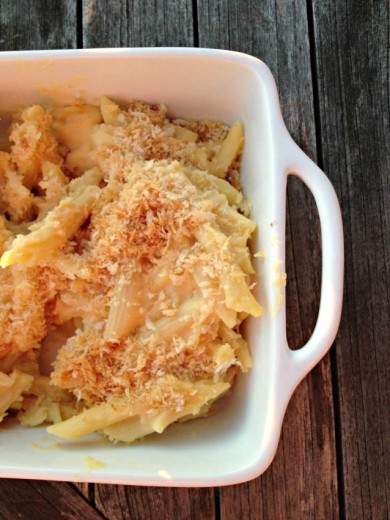

 Share
Share